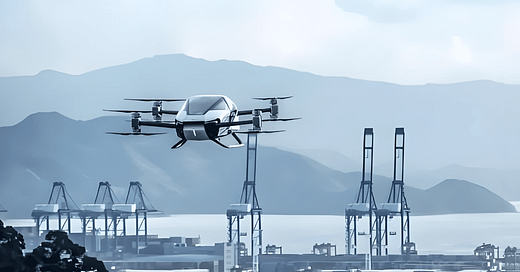China's Low Altitude Economy: 100,000 air taxis by 2030?
China is contending as a leader in the advanced air mobility (AAM) sector, with plans to deploy up to 100,000 air taxis and personal flying vehicles by 20301. Dubbed the “low-altitude economy,” this ambitious vision includes developing large-scale infrastructure, regulatory frameworks, and advanced manufacturing capabilities. Building a fleet of this magnitude introduces significant technological challenges, from achieving reliable autonomous navigation in dense urban environments to ensuring robust communication networks for managing thousands of aircraft simultaneously.
For insurers, this growth presents a significant change in the landscape. Currently, China has just over 3,000 general aviation aircraft2, highlighting the scale of expansion required to meet its 2030 goal. Operating such a vast network of air taxis raises unique challenges, including aggregation risks—particularly cyber vulnerabilities if many aircraft are controlled via shared systems—and traditional risks like mid-air collisions and ground incidents.




